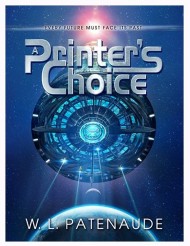"We are losing our attitude of wonder, of contemplation, of listening to creation and thus we no longer manage to interpret within it what Benedict XVI calls 'the rhythm of the love-story between God and man.'"
+ Pope Francis
Researchers: We can all communicate climate change more effectively

My colleague Jen West, the Coastal Training Program Coordinator for Rhode Island's Narragansett Bay Research Reserve, is one of a small but growing number of environmental professionals trained in cutting-edge research on climate change communication. The goal is to have people like Jen educate others, like you and me, so that we can then help even more people appreciate what we're doing to our climate and the impacts this is having.
Jen and a colleague ran a half-day training today at the Audubon Society of Rhode Island. I was one of about two dozen participants from a variety of organizations (state government, zoos, municipalities, non-profits, etc). The information they offered was eye-opening and valuable, and Jen has been kind enough to answer a few questions for me to pass along to you, including resources at the end for much, much more.
Catholic Ecology: I’ve heard you use the term “Strategic Framing.” What is that?
Jen West: Simply put, strategic framing is a recommended set of elements that when used together allow us to strategically navigate our way toward the most impactful and effective communications. It works within existing worldviews instead of trying to change them, resulting in more productive, hopeful and solutions-focused conversations.
CE: What are some of the biggest mistakes most of us make when trying to discuss (or prove!) climate change? Or put another way, why do we make the conversations so difficult?
JW: We think we need to go into the weeds—the technical scientific details. The first thing we should do is appeal to people’s values—essentially the “why we should care.”
Research has shown that protection (safeguarding the wellbeing of people and places) and responsible management (taking common sense steps today is in the interests of future generations) are two deeply held American values that can easily be worked into a conversation about climate change. [Ed. Note: For more on values within climate communications, visit here.]
When we do talk about the science, we need to keep it simple yet understandable, using clear and succinct explanatory chains so that a more informed consideration of solutions is possible.
CE: You've taught that researchers have found that “community” or “collective” solutions are better appreciated by listeners rather than individual ones. Can you say more about that?
JW: We hear about individual solutions from many different sources on a regular basis—turn off the lights when you leave a room, use LED bulbs, ride a bike, plant a tree. While those are all great things, the issue of climate change is a larger-scale problem that needs larger-scale solutions. Mitigating the effects of climate change is going to require massive reductions in carbon dioxide levels.
To affect social change that matches the size of the problem, we need to frame our communications to foster civic-level solutions. We want to frame climate change as a problem that can be addressed at a collective level through practical steps by an informed, engaged citizenry.
CE: My favorite tip: “Watch your tone.” Why is that important?
JW: Maintaining a neutral or reasonable tone is very important. It’s easy to slip into “crisis” mode when talking about climate change; this can evoke responses such as “It’s too big for me so why bother?” Mitigating climate change requires ongoing, sustained effort—it’s a marathon, not a sprint!
CE: What are some examples of the metaphors that help the average person better understand climate change?
JW: Our team of social scientists has carefully developed and tested scientifically accurate metaphors that are proven to help people understand the mechanisms of climate change. When inserted into the story they link the causes and impacts and motivate productive thinking of solutions.
A very effective metaphor for the mechanism of climate change is the Heat Trapping Blanket. Quite simply, when we burn fossil fuels like coal, oil and gas, we pump more and more carbon dioxide into the atmosphere, and this build-up creates a blanket-like effect, trapping in heat around the world. If nothing is done to halt this process, the planet we leave our children will be hotter, with more extreme weather, fewer species, and disrupted systems.
CE: What are your top three or four tips for climate communication?
JW: Remember these:
- Use a neutral, reasonable tone.
- Appeal to people’s values to remind them of what’s at stake.
- Enhance people's understanding of climate change processes and mechanisms using tested explanatory chains and metaphors.
- Present people with ways they can join others to bring forward systemic change and collective solutions!
CE: Jen, we've barely scratched the surface. Where can people go for more?
JW: You can learn more about the program at the National Network for Ocean and Climate Change Interpretation. You can also take advantage of a free online course at the Frameworks Academy. There's also this research report that provides more details on the information touched on above.


















